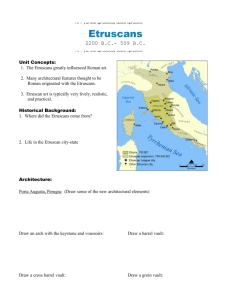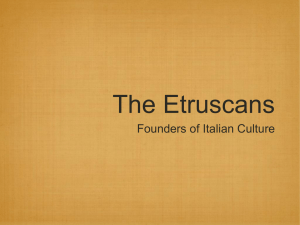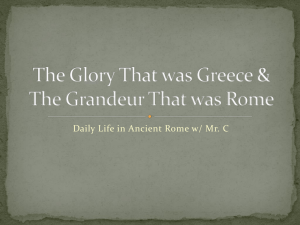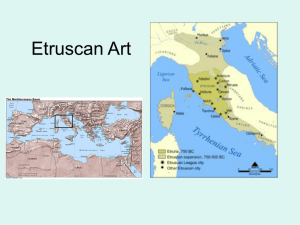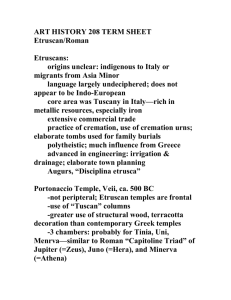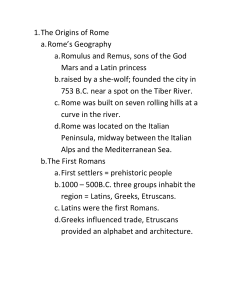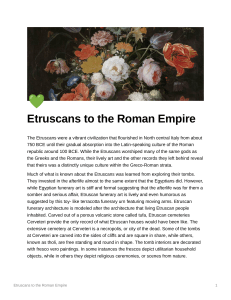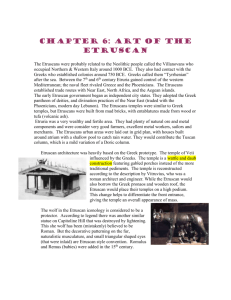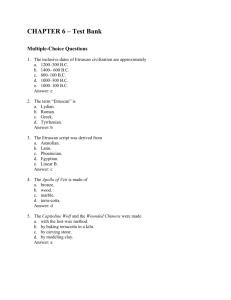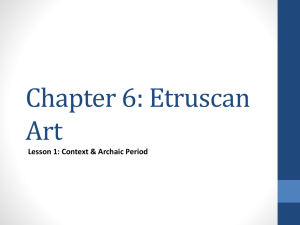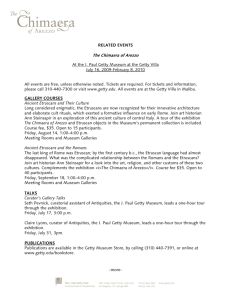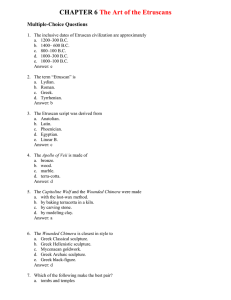Quiz AH I AAT Chap 6 Etruscans MC
advertisement
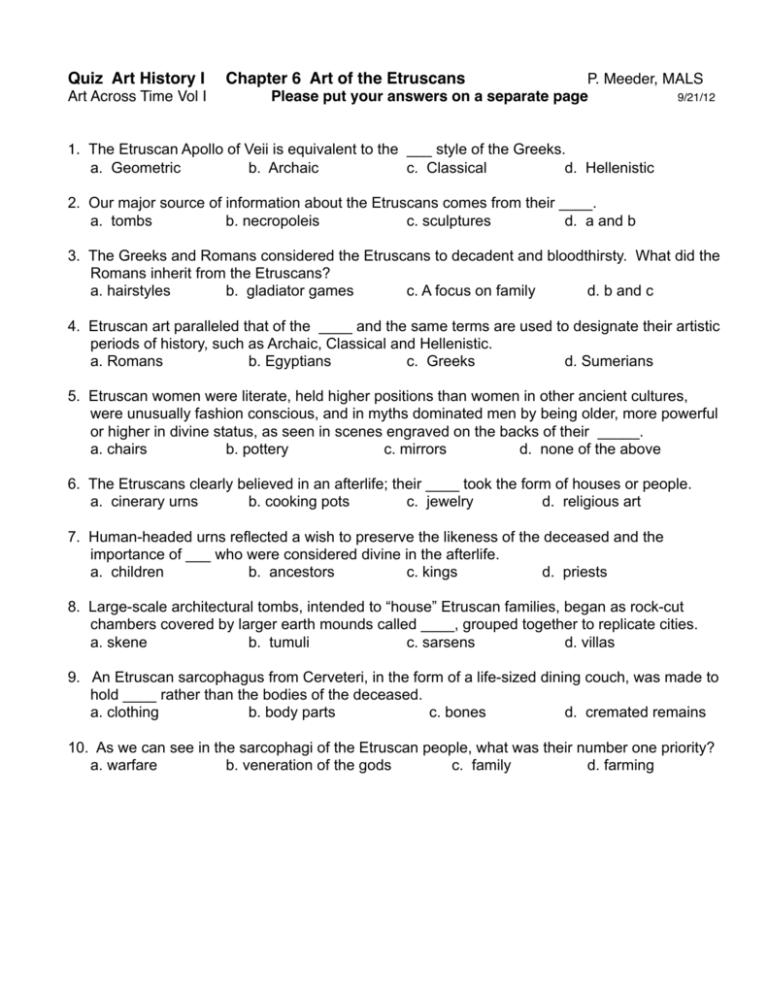
Quiz Art History I ! Chapter 6 Art of the Etruscans! ! Art Across Time Vol I! ! ! ! ! ! ! P. Meeder, MALS Please put your answers on a separate page! ! ! ! 9/21/12 1. The Etruscan Apollo of Veii is equivalent to the ___ style of the Greeks. a. Geometric b. Archaic c. Classical d. Hellenistic 2. Our major source of information about the Etruscans comes from their ____. a. tombs b. necropoleis c. sculptures d. a and b 3. The Greeks and Romans considered the Etruscans to decadent and bloodthirsty. What did the Romans inherit from the Etruscans? a. hairstyles b. gladiator games c. A focus on family d. b and c 4. Etruscan art paralleled that of the ____ and the same terms are used to designate their artistic periods of history, such as Archaic, Classical and Hellenistic. a. Romans b. Egyptians c. Greeks d. Sumerians 5. Etruscan women were literate, held higher positions than women in other ancient cultures, were unusually fashion conscious, and in myths dominated men by being older, more powerful or higher in divine status, as seen in scenes engraved on the backs of their _____. a. chairs b. pottery c. mirrors d. none of the above 6. The Etruscans clearly believed in an afterlife; their ____ took the form of houses or people. a. cinerary urns b. cooking pots c. jewelry d. religious art 7. Human-headed urns reflected a wish to preserve the likeness of the deceased and the importance of ___ who were considered divine in the afterlife. a. children b. ancestors c. kings d. priests 8. Large-scale architectural tombs, intended to “house” Etruscan families, began as rock-cut chambers covered by larger earth mounds called ____, grouped together to replicate cities. a. skene b. tumuli c. sarsens d. villas 9. An Etruscan sarcophagus from Cerveteri, in the form of a life-sized dining couch, was made to hold ____ rather than the bodies of the deceased. a. clothing b. body parts c. bones d. cremated remains 10. As we can see in the sarcophagi of the Etruscan people, what was their number one priority? a. warfare b. veneration of the gods c. family d. farming
